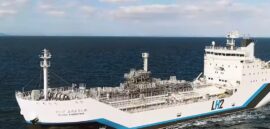
Measuring the oxygen content in hydrogen is critical for ensuring safety and maintaining the quality of the product. A high oxygen level in hydrogen piping can pose a significant risk of explosion or fire, and can also cause unwanted reactions or contamination that result in decreased efficiency and lower-quality products. Therefore, accurate and reliable measurement of the oxygen content in high-pressure hydrogen piping is essential for process efficiency, product quality, and safety.
Traditionally, measuring the oxygen content in high-pressure hydrogen piping involved extracting a sample and reducing the pressure for analysis. However, this method has several drawbacks, including complexity and inaccuracies caused by sample conditioning and handling. As a result, many companies are turning to in-situ installation of oxygen analyzers inside high-pressure hydrogen piping, which offers real-time measurement, reduced complexity, and improved accuracy.
Optical analyzers based on fluorescence technology have become increasingly popular for on-line oxygen analysis due to their numerous advantages. Fluorescence technology is a non-contact optical measurement method that detects the fluorescence emission from a sample when excited by a specific wavelength of light. Optical oxygen analyzers offer several advantages over traditional oxygen analysis methods, including their ability to measure high-pressure streams without pressure reduction, high accuracy and stability, and ease of installation and operation.
Recently introduced to the market, MOD-1040 Oxygen Analyzer is based on advanced photonics technology that relies on luminescence quenching of a specially-designed sensor dye immobilized on a support foil. The sensor spot is stimulated with red light, and the resulting luminescence is measured in the near-infrared range of the electromagnetic spectrum. MOD-1040 allows for direct measurement of oxygen content in high-pressure pipelines, eliminating the need for gas sample extraction or conditioning.
By installing an oxygen analyzer directly into high-pressure hydrogen piping, operators can continuously monitor the oxygen content in real-time without the need for sample extraction or pressure reducing. This method is not only faster and more efficient but also much safer, as it eliminates the risk of exposure to atmospheric oxygen and reduces the need for hazardous area classification.
In conclusion, optical analyzers based on fluorescence technology offer numerous advantages for on-line oxygen analysis, making them an attractive option for industries that require real-time and accurate oxygen measurement, especially those dealing with high-pressure gas streams. With advances in technology and continuous improvements in design, fluorescence-based analyzers are likely to remain a popular choice for on-line oxygen analysis in the future.






